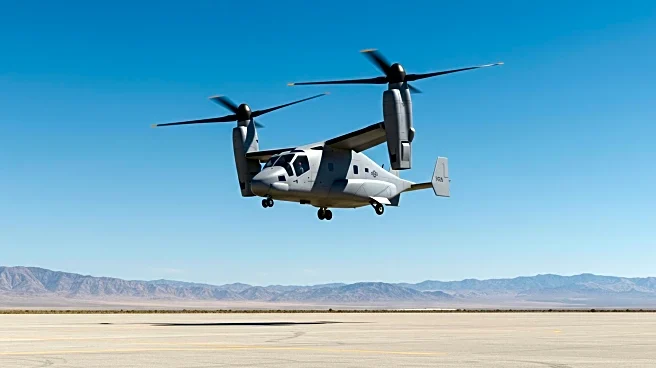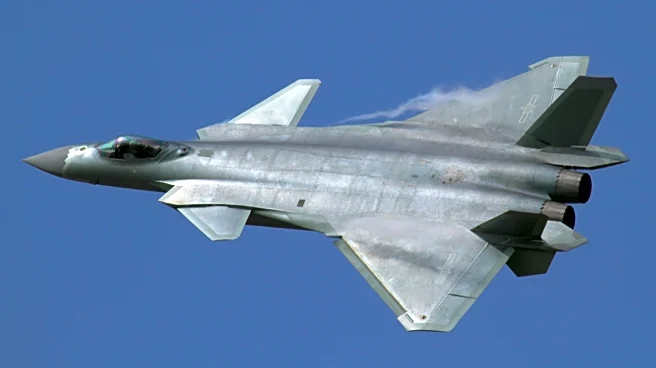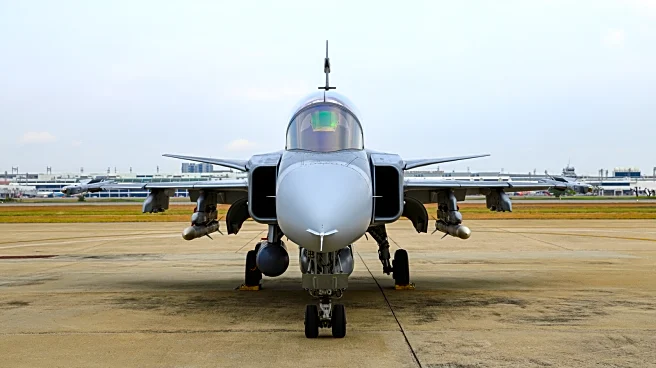What is the story about?
What's Happening?
China's AVIC is testing a new tiltrotor aircraft, which has potential applications for military use. Recent images on Chinese social media show the aircraft airborne with rotors tilted upwards, indicating its capability for vertical takeoff and landing. The design resembles the Bell MV-75, a tiltrotor in development for the U.S. Army, with rotors that pitch up while engines remain fixed. This configuration reduces complexity and improves reliability compared to earlier models like the V-22, which tilt the entire engine pod. The aircraft's designation and production plans remain undisclosed, suggesting it may serve as a technology demonstrator.
Why It's Important?
The development of tiltrotor technology by China signifies a strategic enhancement of its military capabilities, particularly in amphibious operations. Tiltrotors offer higher speeds and greater range than traditional helicopters, allowing for rapid troop deployment and increased operational reach. This advancement aligns with China's broader military expansion, including its growing fleet of amphibious assault ships. The technology could significantly enhance China's ability to project power and conduct operations in contested regions.
What's Next?
If the tiltrotor aircraft enters production, it could become a key asset in China's military strategy, particularly in the Asia-Pacific region. The development may prompt other nations to accelerate their own tiltrotor programs, leading to increased competition and innovation in military aviation. Additionally, the technology could be adapted for civilian use, potentially revolutionizing air transport and logistics.
AI Generated Content
Do you find this article useful?












